Related Research Articles

Carbon dioxide (chemical formula CO2) is a chemical compound made up of molecules that each have one carbon atom covalently double bonded to two oxygen atoms. It is found in the gas state at room temperature. In the air, carbon dioxide is transparent to visible light but absorbs infrared radiation, acting as a greenhouse gas. It is a trace gas in Earth's atmosphere at 421 parts per million (ppm), or about 0.04% by volume (as of May 2022), having risen from pre-industrial levels of 280 ppm. Burning fossil fuels is the primary cause of these increased CO2 concentrations and also the primary cause of climate change. Carbon dioxide is soluble in water and is found in groundwater, lakes, ice caps, and seawater. When carbon dioxide dissolves in water, it forms carbonate and mainly bicarbonate (HCO−
3), which causes ocean acidification as atmospheric CO2 levels increase.

Hypothetical types of biochemistry are forms of biochemistry agreed to be scientifically viable but not proven to exist at this time. The kinds of living organisms currently known on Earth all use carbon compounds for basic structural and metabolic functions, water as a solvent, and DNA or RNA to define and control their form. If life exists on other planets or moons it may be chemically similar, though it is also possible that there are organisms with quite different chemistries – for instance, involving other classes of carbon compounds, compounds of another element, or another solvent in place of water.
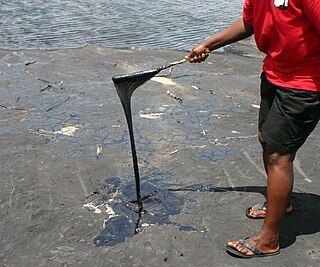
Tar pits, sometimes referred to as asphalt pits, are large asphalt deposits. They form in the presence of oil, which is created when decayed organic matter is subjected to pressure underground. If this crude oil seeps upward via fractures, conduits, or porous sedimentary rock layers, it may pool up at the surface. The lighter components of the crude oil evaporate into the atmosphere, leaving behind a black, sticky asphalt. Tar pits are often excavated because they contain large fossil collections.
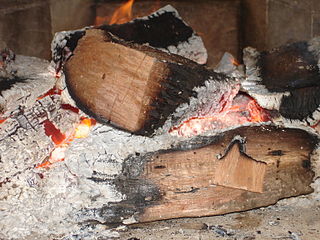
The pyrolysis process is the thermal decomposition of materials at elevated temperatures, often in an inert atmosphere. It involves a change of chemical composition. The word is coined from the Greek-derived elements pyro "fire", "heat", "fever" and lysis "separating".
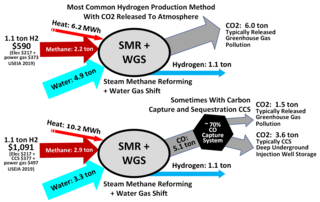
Steam reforming or steam methane reforming (SMR) is a method for producing syngas (hydrogen and carbon monoxide) by reaction of hydrocarbons with water. Commonly natural gas is the feedstock. The main purpose of this technology is hydrogen production. The reaction is represented by this equilibrium:

Pressure swing adsorption (PSA) is a technique used to separate some gas species from a mixture of gases under pressure according to the species' molecular characteristics and affinity for an adsorbent material. It operates at near-ambient temperature and significantly differs from the cryogenic distillation commonly used to separate gases. Selective adsorbent materials are used as trapping material, preferentially adsorbing the target gas species at high pressure. The process then swings to low pressure to desorb the adsorbed gas.
Poroelasticity is a field in materials science and mechanics that studies the interaction between fluid flow and solids deformation within a linear porous medium and it is an extension of elasticity and porous medium flow. The deformation of the medium influences the flow of the fluid and vice versa. The theory was proposed by Maurice Anthony Biot as a theoretical extension of soil consolidation models developed to calculate the settlement of structures placed on fluid-saturated porous soils. The theory of poroelasticity has been widely applied in geomechanics, hydrology, biomechanics, tissue mechanics, cell mechanics, and micromechanics.

Carbon capture and storage (CCS) is a process in which a relatively pure stream of carbon dioxide (CO2) from industrial sources is separated, treated and transported to a long-term storage location. For example, the carbon dioxide stream that is to be captured can result from burning fossil fuels or biomass. Usually the CO2 is captured from large point sources, such as a chemical plant or biomass plant, and then stored in an underground geological formation. The aim is to reduce greenhouse gas emissions and thus mitigate climate change.
Enhanced oil recovery, also called tertiary recovery, is the extraction of crude oil from an oil field that cannot be extracted otherwise. EOR can extract 30% to 60% or more of a reservoir's oil, compared to 20% to 40% using primary and secondary recovery. According to the US Department of Energy, carbon dioxide and water are injected along with one of three EOR techniques: thermal injection, gas injection, and chemical injection. More advanced, speculative EOR techniques are sometimes called quaternary recovery.

The Institution of Chemical Engineers (IChemE) is a global professional engineering institution with over 33,000 members worldwide. It was founded in 1922 and awarded a Royal Charter in 1957.

The Department of Chemical Engineering and Biotechnology (CEB) is one of the teaching and research departments at the University of Cambridge. The department trains undergraduate students and conducts original research at the interfaces between engineering, chemistry, biology and physics. It conducts research in collaboration with industrial partners. Its research programmes encompass sustainable reaction engineering, chemical product and process design, healthcare, measurement, and materials science. It conducts biotechnology research with chemical engineering at the science-engineering interface.
Electromethanogenesis is a form of electrofuel production where methane is produced by direct biological conversion of electrical current and carbon dioxide.

Chemical cycling describes systems of repeated circulation of chemicals between other compounds, states and materials, and back to their original state, that occurs in space, and on many objects in space including the Earth. Active chemical cycling is known to occur in stars, many planets and natural satellites.

Helen Jane Wilson,, is a British mathematician and the first female Head of Mathematics at University College London (UCL).
John W. Rudnicki is an American engineering professor.

Praveen Linga PhD, a chemical engineer, is a professor at the National University of Singapore's Department of Chemical and Biomolecular Engineering. He is currently serving as a Vice Dean for Industry, Innovation & Enterprise at the College of Design and Engineering. He is an expert in clathrate hydrates or gas hydrates. He is also the co-founder of NewGen Gas Pte Ltd, a spin-off company that specialises in solidified natural gas (SNG) technology via clathrate hydrates for natural gas storage and transport. He has been interviewed and has provided expert opinion and commentary in the media.
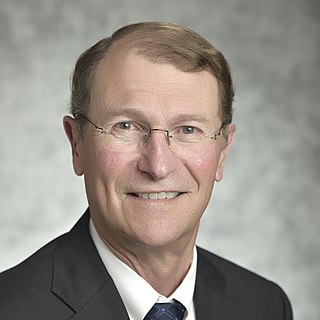
Franklin (Lynn) M. Orr, Jr. is an American chemical engineer and former Under Secretary for Science and Energy of the U.S. Department of Energy from 2014 to 2017. Prior to his government service, he was a professor of engineering at the Stanford Department of Energy Resources Engineering. He was elected a member of the U.S. National Academy of Engineering in 2000 for contributions to understanding of complex multicomponent flows in porous media and its applications to the design of enhanced oil recovery processes; and for superb academic leadership. He is married to Susan Packard Orr.

Jennifer Wilcox is an American chemical engineer and an expert carbon capture and storage and removal of CO2 from the atmosphere. She is the Presidential Distinguished Professor of Chemical Engineering and Energy Policy at University of Pennsylvania and a former James H. Manning Chaired Professor of Chemical Engineering at Worcester Polytechnic Institute. Wilcox conducts research focused on minimizing the environmental and climate impacts of our dependence on fossil fuels. In January 2021, she became acting Assistant Secretary for Fossil Energy and Carbon Management and Principal Deputy Assistant Secretary (PDAS) for Fossil Energy and Carbon Management.
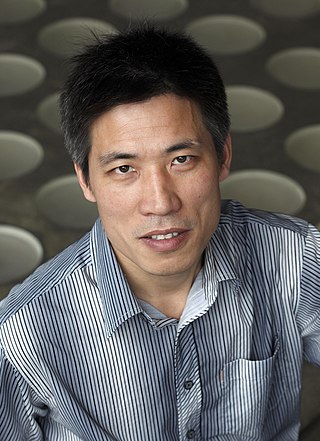
Junwang Tang, MAE, FRSC, is a professor of materials chemistry and engineering at the Department of Chemical Engineering, University College London (UCL). He also served as the director of the University Material Hub (2016–2019).
Julyan Cartwright is an interdisciplinary physicist working in Granada, Spain at the Andalusian Earth Sciences Institute of the CSIC and affiliated with the Carlos I Institute of Theoretical and Computational Physics at the University of Granada.
References
- ↑ Blake, Vanessa S. (5 July 2018). "Fluids and Environment". www.ceb.cam.ac.uk.
- ↑ "Chemical Engineering Science Editorial Board" – via www.journals.elsevier.com.
- ↑ "Chemical Engineering Journal Editorial Board" – via www.journals.elsevier.com.
- ↑ "Davidson Medal winners – IChemE". www.icheme.org.
- ↑ "The Complexities of Carbon Capture and Storage (Day 238)". 20 January 2015.
- ↑ "3.5 percent of global methane deposits could be melted by 2100 due to climate change".
- ↑ "Self-Assembling Ice Membranes on Europa – Astrobiology". 6 March 2019.